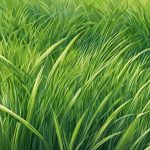Types Of Philodendron
Philodendrons are a popular choice for indoor plants, valued for their attractive foliage and easy care. With over 480 species in the Araceae family, there are many different types of philodendrons to choose from, each with its own unique characteristics. Understanding the different varieties and types of philodendrons can help you select the best plant for your home and ensure that it thrives.
Philodendrons come in a variety of shapes, sizes, and colors, from the classic heartleaf philodendron to the striking pink princess. Some philodendrons are vining, while others grow in a bushy form. The diverse range of philodendron varieties means that there is a plant to suit every taste and space. However, it is important to note that while philodendrons are generally easy to care for, they do have specific requirements when it comes to light, water, and soil.
Understanding the different types of philodendrons and their care requirements can help you create a beautiful and thriving indoor garden. From selecting the right variety for your space to ensuring that your plants receive the right amount of light and water, there are many factors to consider when growing philodendrons. By following these essential care tips, you can enjoy the beauty of philodendrons in your home for years to come.
Key Takeaways
- There are many different types of philodendrons to choose from, each with its own unique characteristics.
- Philodendrons have specific requirements when it comes to light, water, and soil.
- Understanding the different types of philodendrons and their care requirements is essential for creating a thriving indoor garden.
Philodendron Varieties and Types

Philodendrons are beloved houseplants that come in a wide variety of shapes, sizes, and colors. They are known for their heart-shaped leaves and vining or climbing habits. In this section, we will explore some of the most popular philodendron varieties and types, including climbing and non-climbing varieties, rare and exotic species, variegated philodendrons, and popular hybrids.
Climbing Philodendrons
Climbing philodendrons are known for their vining habits and are often grown on trellises or allowed to climb up walls or other structures. The heartleaf philodendron (Philodendron hederaceum) is one of the most popular climbing varieties, with small, heart-shaped leaves that trail down from the vines. Another popular climbing variety is the philodendron micans, which has velvety, dark green leaves with bronze undertones.
Non-Climbing Philodendrons
Not all philodendrons are climbers. Some, like the xanadu (Philodendron xanadu), have a more compact, bushy habit. The bipinnatifidum (Philodendron bipinnatifidum), also known as the selloum philodendron, has large, deeply lobed leaves that give it a tropical look. Both of these non-climbing varieties are popular houseplants.
Rare and Exotic Philodendrons
For collectors and enthusiasts, rare and exotic philodendrons are highly sought after. The philodendron erubescens, also known as the blushing philodendron, has striking pink and red foliage. The philodendron white knight is one of the rarest philodendrons, with dark green and white variegated leaves. Other rare species include the philodendron billietiae and the philodendron atabapoense.
Variegated Philodendrons
Variegated philodendrons are prized for their unique foliage patterns. The black cardinal has dark, almost black leaves with a contrasting white variegation. The philodendron birkin has creamy white splash patterns on its dark green leaves. The pink princess has pink variegation on its dark green leaves, making it a highly sought-after variety.
Popular Philodendron Hybrids
Hybrid philodendrons are created by crossing two or more different species. The philodendron er is a popular hybrid that combines the beauty of the philodendron erubescens with the compact, bushy habit of the xanadu. The birkin is another popular hybrid, with its creamy white splash patterns on dark green leaves. The prince of orange is a newer hybrid, with bright orange new growth that matures to a deep green.
In conclusion, philodendrons come in a wide variety of shapes, sizes, and colors, making them a versatile and beloved houseplant. Whether you prefer climbing or non-climbing varieties, rare and exotic species, variegated foliage, or popular hybrids, there is a philodendron for everyone.
Philodendron Care Essentials
Philodendrons are easy-to-care-for houseplants that thrive in bright, indirect light and high humidity. In this section, we will cover the essential care requirements for your philodendron, including lighting, watering, soil, fertilization, pruning, and maintenance.
Lighting Requirements
Philodendrons prefer bright, indirect light. Direct sunlight can burn their delicate leaves, so it’s best to keep them away from windows that receive direct sunlight. If your philodendron is not getting enough light, it may become leggy and slow-growing. In this case, you can move it to a brighter location or consider supplementing its light with artificial lighting.
Watering and Humidity
Philodendrons prefer to be kept consistently moist, but not overwatered. Overwatering can lead to root rot and other issues. It’s important to water your philodendron when the top inch of soil is dry to the touch. In addition to regular watering, philodendrons also require high humidity levels to thrive. You can increase humidity levels by placing a humidifier near your plant or by placing a tray of water near it.
Soil and Repotting
Philodendrons require well-draining soil to prevent waterlogging and root rot. When repotting your philodendron, it’s important to use a potting soil that is specifically formulated for indoor plants. You should also choose a pot that is only slightly larger than the current one to prevent overwatering and allow the roots to grow into the new soil.
Fertilization and Growth
Philodendrons are slow-growing plants that do not require frequent fertilization. You should fertilize your philodendron once a month during the growing season with a balanced fertilizer. Overfertilization can lead to salt buildup in the soil and damage to the plant.
Pruning and Maintenance
Philodendrons require minimal pruning and maintenance. You should prune your philodendron in the spring to remove any dead or damaged leaves and encourage new growth. In addition to pruning, it’s important to regularly wipe down your plant’s leaves with a damp cloth to keep them looking their best.
Overall, philodendrons are low-maintenance houseplants that can add a touch of tropical beauty to any indoor space. By following these care essentials, you can ensure that your philodendron thrives and remains healthy for years to come.
Philodendron Placement and Styling
Philodendrons are versatile plants that can be used to create a lush and tropical atmosphere in any space. In this section, we will discuss the best ways to display and cultivate philodendrons both indoors and outdoors.
Indoor Display
Philodendrons are excellent houseplants that can thrive in a variety of lighting conditions. For best results, place your philodendron in bright indirect light. This means that the plant should be near a window that receives plenty of natural light, but not in direct sunlight. Large-leaved varieties such as the Silver Sword and Blushing Philodendron are particularly striking and can make a bold statement in any room.
Philodendrons can be displayed in a variety of ways, including in hanging baskets or on plant stands. Hanging baskets are a popular choice for philodendrons, as they allow the plant to trail down and create a cascading effect. To create a stunning display, consider grouping several different varieties of philodendrons together in a large hanging basket or placing them on a plant stand.
Outdoor Cultivation
Philodendrons are native to the rainforests of South and Central America, and as such, they thrive in warm and humid conditions. If you live in a warm climate, you can grow philodendrons outdoors in your garden. They can be planted directly in the ground or in large pots on your patio or balcony.
When planting philodendrons outdoors, it is important to choose a location that receives bright, indirect light. They can also tolerate some direct sunlight, but too much can scorch their leaves. In addition, make sure that the soil is well-draining and rich in organic matter.
In conclusion, philodendrons are beautiful and easy-to-care-for plants that can add a touch of houseplant beauty to any space. Whether you choose to display them indoors or outdoors, they are sure to be a stunning addition to your collection.
Understanding Philodendron Diversity
Philodendrons are a diverse group of plants that come in various shapes, sizes, and colors. They are native to tropical regions of South America and Central America, including Brazil. There are over 500 species of philodendron, and their cultural and geographic origins contribute to their diversity.
Cultural and Geographic Origins
Philodendrons are found throughout the tropics, with a few species extending into temperate climates. They are commonly found in the rainforests of South America and Central America. The plants have been cultivated for centuries and are popular houseplants due to their attractive foliage.
Leaf Shapes and Textures
Philodendrons come in a range of leaf shapes and textures. The heartleaf philodendron is a popular variety with glossy green leaves that are heart-shaped. Other varieties, such as the split-leaf philodendron, have leaves that are deeply lobed and split. The velvet-leaf philodendron has soft, velvety leaves that are a deep green color.
Philodendron Classification
Philodendrons belong to the Araceae family, which includes other popular houseplants such as the peace lily and the ZZ plant. Within the philodendron genus, there are many different varieties and types. Some of the most common types include the common philodendron, the philodendron moonlight, and the philodendron rugosum.
Overall, philodendrons are a diverse group of plants that offer a range of sizes, shapes, and colors. Their cultural and geographic origins contribute to their unique characteristics, and their classification within the Araceae family highlights their popularity as houseplants.
Propagation and Breeding of Philodendrons
Philodendrons are easy to propagate and breed. There are several techniques that can be used to propagate Philodendrons, including stem cuttings, layering and division, and seed propagation.
Stem Cuttings Technique
Stem cuttings are the most common method of propagating Philodendrons. This technique is easy and can be done at any time of the year. The stem cutting should be taken from a healthy plant and should be about 6 inches long. The cutting should be taken just below a node, and any leaves on the lower half of the cutting should be removed.
The cutting should be placed in a pot filled with well-draining soil. The soil should be kept moist, but not wet. After a few weeks, the cutting will start to grow roots, and new growth will appear on the stem.
Layering and Division
Layering and division are other methods of propagating Philodendrons. Layering involves burying a section of the stem in the soil, while division involves separating a plant into smaller sections.
To layer a Philodendron, a section of the stem should be buried in the soil, leaving the top of the stem exposed. The buried section of the stem will develop roots, and new growth will appear on the stem.
To divide a Philodendron, the plant should be carefully removed from its pot and separated into smaller sections. Each section should have its own roots and stem.
Seed Propagation
Seed propagation is another method of propagating Philodendrons, but it is less common than stem cuttings and division. Philodendron seeds can be collected from the plant and planted in well-draining soil. The soil should be kept moist, but not wet. After a few weeks, the seeds will start to germinate, and new growth will appear.
Overall, Philodendrons are easy to propagate and breed, and there are several techniques that can be used to do so. Whether you choose to use stem cuttings, layering and division, or seed propagation, with proper care and attention, you can grow a healthy and beautiful Philodendron plant.






